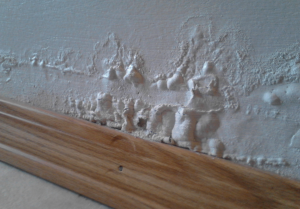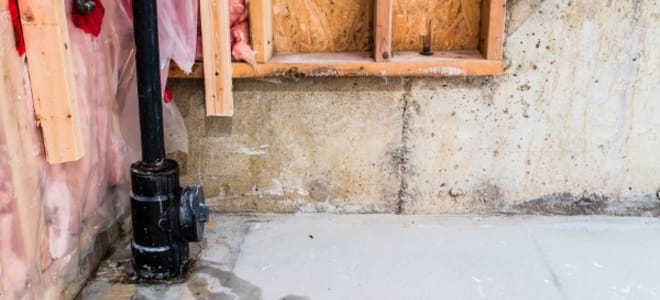Steps to Discover and Fix Water Stains on Walls
Visit My SiteEvery person will have their personal assumption involving Indicators of Water Damage Behind Walls.

Water stains on walls are not pleasant to the eyes. Occasionally it seems nearly inescapable to experience water discolorations on wall surfaces in residences.
Property owners living in moist regions constantly deal with the fear of water stains on wall surfaces. With well-shaped and also exact information on the reasons of water discolorations as well as timely fixing procedures, you will always be an action in advance of such incidents.
3 Typical Root Causes Of Water Spots on Walls
Contrary to common belief, water spots on walls do not always originate from bad building products. There are several sources of water stains on wall surfaces. These include:
Wet
When warm damp air meets completely dry cool air, it creates water beads to base on the wall surfaces of buildings. This takes place in bathrooms and kitchen areas when there is vapor from food preparation or showers. The water droplets can stain the bordering walls in these parts of your house and also spread to various other areas.
Damp or condensation influences the roofing and wall surfaces of buildings. This causes them to show up darker than various other locations of the house. When the wall is wet, it creates a suitable environment for the development of fungis as well as microbes. These might have negative effects on wellness, such as allergies and also respiratory problems.
Poor Drain
When making a structure strategy, it is important to make certain adequate drainage. This will prevent water from leaking into the walls. Where the drain system is obstructed or missing, below ground dampness builds up. This links to too much dampness that you observe on the walls of your building.
So, the leading cause of damp wall surfaces, in this instance, can be a bad water drainage system. It can additionally result from inadequate administration of sewage pipelines that run through the structure.
Pipeline Leaks
Most homes have a network of water pipes within the walls. This ensures that the pipelines are faraway from the reach of devastating rodents. It constantly raises the viability of such pipelines, as there is little oxygen within the walls. This prevents rust.
Yet, a disadvantage to this is that water leakage impacts the wall surfaces of the structure and also causes extensive damages. An indication of faulty pipelines is the look of a water stain on the wall.
Pro Suggestion
A houseplant in your home also increases its humidity. So, if your home is already humid, you might intend to present houseplants with marginal transpiration. An example of appropriate houseplants is succulents.
Water Discolorations on Wall Surface: Repair Service Tips
When dealing with water stains, house owners would typically desire a quick repair. Yet, they would certainly quickly understand this is disadvantageous as the water spots persist. So, here are a couple of useful suggestions that will assist you in the repair work of water discolorations on wall surfaces:
Final thought
No one desires to have water discolorations on walls in their residence, it can occur to the ideal of us. This post gives you take advantage of, as you currently understand just how to handle this incident if it does take place.
It is always best to hire specialist services to assist deal with the problems in your home.
Occasionally it appears almost inescapable to experience water discolorations on wall surfaces in homes.
Contrary to prominent belief, water spots on walls do not constantly stem from bad structure products. There are numerous reasons of water spots on walls. The water droplets can discolor the bordering wall surfaces in these components of your residence and spread to various other areas.
Right here are a couple of helpful tips that will lead you in the repair of water stains on wall surfaces:
CHECKING FOR WATER DAMAGE
Water damage can be costly, and it may begin before you even notice the first signs of trouble. Water damage can cause mold and mildew in your walls and floors, which can create an abundance of health concerns for your family. It can also lead to costly repairs of various appliances and general home fixtures. To avoid the pricey consequences of water damage, here are Warner Service’s top 5 places you should check:
The walls – The easiest place to spot the beginnings of water damage is on the walls and ceilings of your home. If water damage is present, there will most likely be water stains, especially around the windows and doorframes, and/or cracks in the drywall. If a stain looks unusual (discolored to brown, black or gray, raised texture), has a swollen appearance or is soft to the touch, contact a professional immediately. The pipes – To avoid water damage, consistently check the pipes in your kitchen (especially the dishwasher and ice maker), bathrooms, laundry room (specifically washing machines) and basement for corrosion, leaks and water stains. Pay special attention to where the pipes connect in your home and the location of caulking around the bathroom fixtures, including toilets, sinks, showers and tubs. Missing or loose caulking and grout could be signs of leaking water. This seepage can also quickly cause mold and rust, so double check your water heater and tank for wet spots on the floor. The floor – Water damage is very easy to spot on the floor. Look for any warping or buckling of the material, especially in the basement. If your home has wood flooring, look for bright white or dark stains. If your home has carpeting, keep it dry and clean. A damp carpet that smells of mold could cause water damage and health problems. To avoid this, consider installing floor pans under your appliances to help prevent damages from small, slow and undetected leaks. The basement and attic – If your basement or attic smells odd check for mold and mildew around the area, especially the valley where the roof meets. While you are inspecting those areas, check for wall cracks, floor stains, rust and dampness in the insulation. If you live in a colder and/or rainier climate, perform routine checks for water damage from melting snow or ice and rain. The exterior – Check the roof for damaged flashing and missing, cracked or curled shingles. There should also be no standing water anywhere outside your home. This could be caused by puddles, leaky rain gutters or hoses, poor drainage, or short gutter spouts. Invest in a sump pump system or water flow monitoring system, and perform routine maintenance on these outdoor appliances to avoid indoor water damage.

I was made aware of that report about from someone on our other web property. Enjoyed reading our blog? Please share it. Let someone else check it out. We love reading our article about .
Book Today